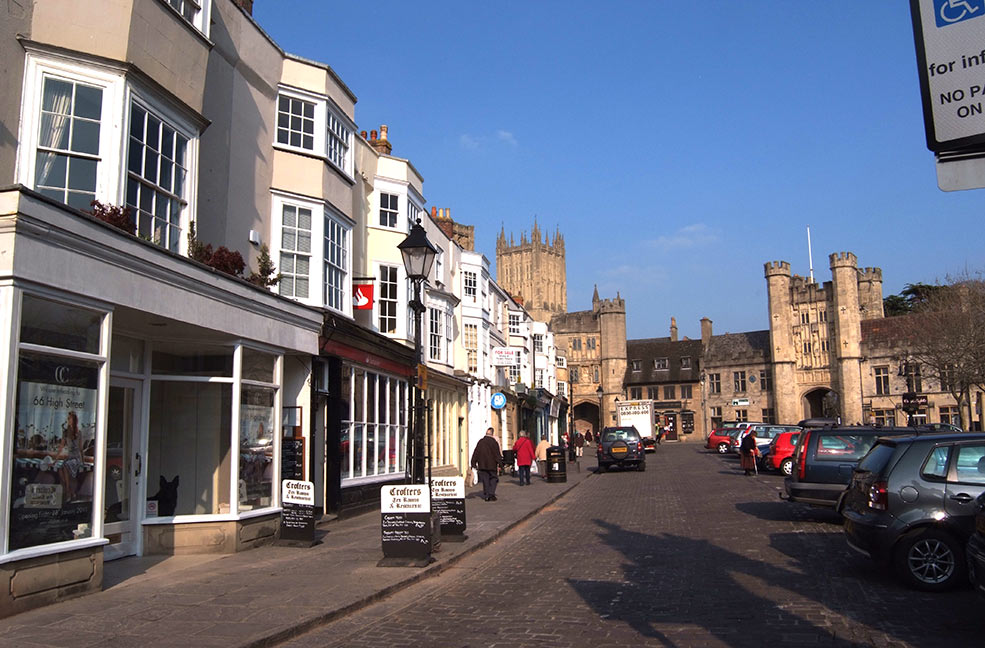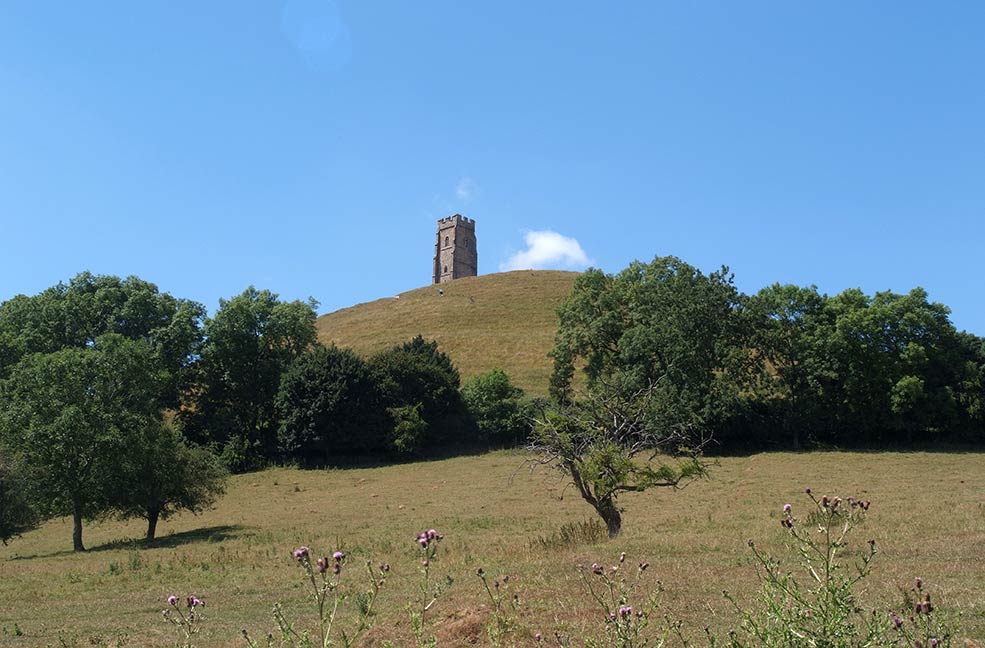The whole of Somerset is steeped in history, but with a wealth of Medieval evidence to impress all history buffs, the county is well worth exploring. For those not so learned on this particular era, Medieval is a term that covers any period within the 5th to 15th century, and so within it boasts a variety of stylings. The best example of this time is concentrated in one Somerset 'city':
The City of Wells
The Cathedral City of Wells is situated around 40 minutes outside of Bath, and the drive itself is picturesque, over the Mendip Hills. Just like Bath, Wells’ history spans right back to the Roman times, and the remnants of that are seen today in the bubbling springs in the gardens of the Bishops Palace that give the city its name.
When visiting Wells, you may wonder how this tiny place is in fact a city. With only 12,000 inhabitants, Wells is granted city status due to its famous 13th Century Cathedral rather than its population. Its small size doesn’t reflect the mammoth amount of history encased within its boundaries. From the afore-mentioned Cathedral and Bishops Palace, to Vicars Close and St Cuthbert’s Church, there really is a plethora of places to explore as a history lover. If you find yourself unsure where to start, pop into the Wells Information Visitor Centre which is conveniently located inside Wells Museum, a great place to learn about the old architecture you are about to explore in the rest of your visit.
Wells Cathedral
Now back to that Cathedral. It was built between 1175 and 1490, and is hailed as ‘the most poetic of English Cathedrals’ among historians and romanticists. Sitting at the medieval heart of England’s smallest city, visitors around the world come to view the gorgeous gothic architecture of this majestic building. It has several distinguishing features for those that know their cathedrals, such as the scissor arches that support the central tower. This part of the cathedral was added in 1338 due to a new spire weighing down too heavily on the rest of the building. Whilst inside the cathedral, you can look at one of the world’s largest collections of antique stained glass, which only narrowly escaped destruction during the Civil War. Also of interest is the four-chained library, and the Wells Clock which is the second oldest working clock mechanism in the country.

Vicars' Close
Next on our medieval tour of Wells is Vicars’ Close. This is next to the cathedral and is said to be the last remaining complete medieval street in the whole of England. It is now considered a significant landmark for this very reason. The story behind it is that the cathedral choir used the close as a communal accommodation block, as they sang in the cathedral daily. This part of the tradition is still alive today, so for those who appreciate choral music, try to catch it, they are world renowned. Originally there were 42 residences in this close, but today there is 27 in addition to a chapel, treasury, library, and monument room. There is an impressive dining hall linking the close to the cathedral too.
Bishops Palace
Bishops Palace and Gardens is our final stop on this tour of medieval Somerset. The Bishops of Bath and Wells have resided here for over 800 years. Within the fortified walls you can explore the ruins of the Great Hall, and the 14 acres of well-maintained gardens including an arboretum. A somewhat unique feature of the palace is its moat, which makes the palace seem more like a castle with its impressive drawbridge and portcullis. This also gives the palace a real sense of age and importance which is not out of place.

Wells really is the medieval heart of Somerset, and a place history lovers of all ages will thoroughly enjoy.





